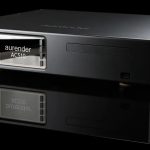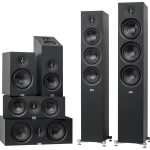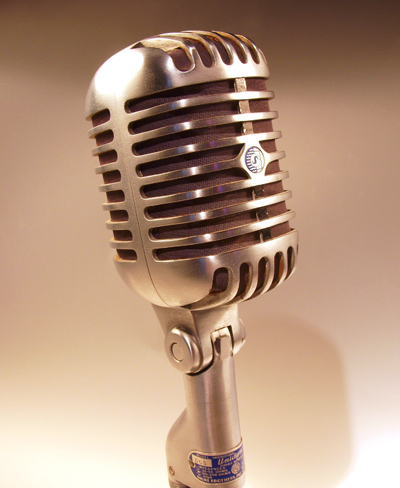by : Didi Kertanegara
This is one little device will most likely is in every house or in every business people. Without we being aware, a tiny micropone is inside your telephone at home and inside your cellular phone. A mic is also available in every portable computer nowadays, so you can chat with your friends around the world. However microphones also contribute the most important factor in music industry. From the first time a musical instrument gets recorded, to the final show where the artist performs in the audiences, they all need microphones. But not all microphones are created equal, thus sound engineers use them according to the applications and sound source.
In principal, a microphone is a transducer as it changes one form of energy into another form. In this case it changes a waveform into an electrical signal. Normally a mic consists of a membrane or diaphram that captures the sound wave. The diaphram has a coil that wrapped around a stationary magnet and the movement of the coil in the fixed magnetic field generates an electrical signal. The very low the signal goes into a circuitry where it is amplified to mic level signal to be connected to a preamp or mixing console.The type of microphones commonly found in the market are : dynamic, condenser, ribbon, and pzm.
Dynamic
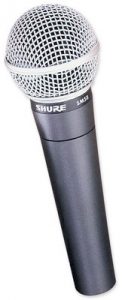
Microphone is the most popular to be used everyday life. They can be found at public address paging system, telephone, cellular phone, and even karaoke set up. Dynamic mic does not require an external 48 volts dc power or normally called the phantom power. Thus the output of dynamic mic relies based on the diaphram output, and considered rather low in voltage. Due to its design the frequency response are about 50hz – 15 khz, but this is good enough to capture human voice. Many of the dynamic microphones can sustain a high level of sound pressure, and used in many high level musical instrument such as snare, tom, and kick drum
Sample of dynamic microphones are : Shure SM58, Electro voice RE20, AKG, D112.
Condenser
In principal condenser mic is similar to dynamic mic, however condenser mic requires 48 volt dc power in order work. This dc power is fed through the electronic circuitry of the microphone and as the result condenser mic has a wider frequency bandwith and more sensitive than dynamic microphones. A good condenser mic can easily capture sound from 20hz – 20 khz, and sensitive enough to record whispher. Most of these mics are suitable to record human voice and delicate musical instrument such as violin, flute and even room ambience. Brands such as Neumann U87, Sanken CU 44X, AKG 414, are the sample of condenser microphones.
Ribbon
Microphones work with the help two aluminum ribbons that are placed between the poles of a magnet to generate voltage. Just like ribbon speakers, the sound captures by this type of microphone gives a different flavor. Ribbon mic is good to capture instrument or sound that needs detail. However ribbon mic has a low output, even lower than a dynamic microphone and therefore will require a very good mic pre amplifier that can boost the signal to an addequate level for recorder.

Samples from ribbon mics are : CAD Trion, AEA R84, Beyerdynamic M160.
PZM
or so called Pressure Zone Micropone is often used for boundary microphone due to its compact low profile design. Its condenser capsule is set flush mount to its casing. In concert hall these PZM mics are used to capture audience sound when they give applause. We can also find this type of mic in office teleconference system as the mic is not obstructive. Here are the most commond PZM mic: Crown, CAD 901
Polar Pattern
A microphone will pick up the sound depending on the polar patter. The most common polar patterns are cardiod, omni, and figure 8. Cardiod pattern has a shape like a heart, and it has the most sensitivity when picking up signal from its front area and will be least sensitive from the back. This cardiod pattern microphones are widely used for live concert where the set up will be to capture the sound of the artits, but reject the sound from speaker monitor.
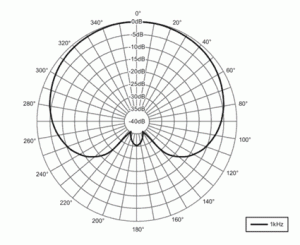
An Omnidirectional mic will pick up signal from all angles at the same level. This type of mics are commonly found in the intercom system, cellularphone, and even conference mic system.
Figure 8 pollar pattern captures the best signal from both and rear but not from its side. This pattern can be used to capture two singers standing facing each other or combined with a cardiod patter to form an MS (middle side) recording techniques.
Connection
Signal from a microphone is carried to mixer or preamplifier by either cable (wired) or radio frequency (wireless). In cable or wired mic, normally there are three wires label pin 1, 2 and 3 and assembled in XLR connectors. Pin 1 is normally for ground or shielding to help reject radio interference. Pin 2 is the hot + signal, and Pin 3 is for the – signal. In the professional world, a balanced mic can be wired as long as 100 meter without any signal degradation. However, most dynamic microphones at consumer products such as telephone or computer only have 2 pin conductors which are the + and – signal.
With the advance of technology, wireless microphone carries its signal through radio frequency. The frequencies being used are normally in VHF or UHF spectrum FM band. This FM radio range are considered clean frequency and will not get interference from citizen band radio (CB) FM radio station. Many wireless mics utilize dual diversity radio receivers in order to get the best connection between the transmitter and its receiver. Dual diversity receiver has two independent channels, and will switch automatically if one channel fails to receive signal being transmitter by the handheld mic. In the straight line of sight most professional UHF wireless mic can have up 100 meter range before it starts to loose signal transmission, but in reality for important event the wireless transmitter mics are placed near their receiver to avoid any signal loss.
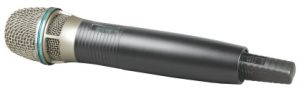
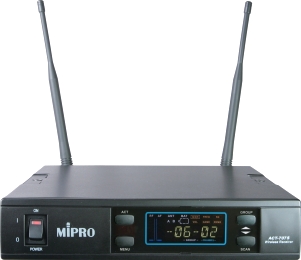
Conclution
Manufacturers have produced many microphones in the market, and it is important to know the type or function before you start using them. Using a microphone is like wearing shoes; there shoes for running, casual or for party. We simply must select the correct type accordingly to get the best result.






